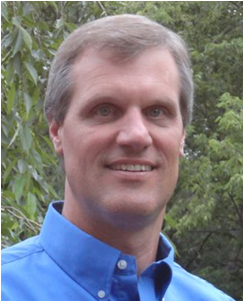 My first exposure to Optical Engineering occurred as a graduate student at Georgia Tech shortly after I attended an SPIE optical fibers conference in Atlanta and subsequently became a student member of SPIE. Perhaps for that reason, I have always maintained a sentimental connection to this prestigious journal. I recall receiving my first copy of Optical Engineering in the mail, attempting to read and understand each article, and realizing that I had much to learn about optics. Fortunately, that learning process has never ended.
My first exposure to Optical Engineering occurred as a graduate student at Georgia Tech shortly after I attended an SPIE optical fibers conference in Atlanta and subsequently became a student member of SPIE. Perhaps for that reason, I have always maintained a sentimental connection to this prestigious journal. I recall receiving my first copy of Optical Engineering in the mail, attempting to read and understand each article, and realizing that I had much to learn about optics. Fortunately, that learning process has never ended.
Since my graduate studies, my career has been centered on research and development. I currently serve as the senior scientist for electro-optical and infrared technology at the Air Force Research Laboratory (AFRL) near Dayton, Ohio, where I have the pleasure of leading a diverse and exciting research program encompassing everything from the latest advances in optical materials and devices to the development of the most sophisticated infrared sensor systems for military aircraft. This work brings me in regular contact with exceptional researchers within the laboratory and throughout the world. I am also an adjunct faculty member at the Air Force Institute of Technology, where I teach a graduate class on hyperspectral remote sensing and guide student research. Before my 15-year tenure at AFRL, I spent 10 years at the Environmental Research Institute of Michigan where I learned to perform research in optical processing, holography, and remote sensing from pioneers in their respective fields. Personally, my wife and I have two daughters, the older of whom is currently in graduate school and the younger of whom will be heading off to college next year. It is a proud yet sometimes bittersweet time for my wife and me to see them grow as young adults and find their own way in the world.
I am honored and humbled to be the latest in a succession of highly respected editors-in-chief of this journal. Many I have known only by reputation, but I have the pleasure of a personal connection to the previous two: Drs. Donald O’Shea and Ronald Driggers. During my graduate studies at Georgia Tech, I took two classes on optics and laser physics from Prof. O’Shea. Although my impressions of him may be colored by the teacher-student relationship, I found him to be conservative, precise, and challenging, but at the same time approachable and cordial. His ten-year tenure of steady leadership of Optical Engineering correlates with these traits. As a peer researcher in the infrared sensing field, I have had a collegial relationship with Dr. Driggers and worked with him for the past few years on the editorial board of Optical Engineering as well as the SPIE Board of Directors. In some ways, Ron’s personality is the polar opposite of my recollection of Dr. O’Shea’s: progressive, direct, and extroverted. Similar to his predecessor, Ron made his positive mark on the journal through his own unique personality traits, willing to make significant changes where they were needed to enhance the significance and impact of the journal content. Both were very effective in different ways, arguably providing the journal what was needed at the time. Before beginning my own journey as editor-in-chief, I would first like to acknowledge the outstanding service provided by all of my predecessors. In particular, I would like to give special thanks to Ron for his passion to raise the quality of the journal, his invitation to me to become part of the editorial board, his friendship, and his encouragement to take on this new challenge. I hope to build on his success.
The world of scientific journals has changed significantly since I received my first copy of Optical Engineering. The primary media has shifted from paper to digital, and scientists and engineers now have many alternatives literally at their fingertips to access technical information. The rate of technology development seems to be ever increasing, making timeliness almost as important as the quality of publication. The journal has adapted and will need to continue adapting to these trends to remain a relevant venue for exchanging information about the exciting new work in the optical engineering field. At the same time, it is important for the journal to stay true to its roots: a print journal with a long history of excellence, and high publication standards for originality, significance, and scientific quality. As the new editor-in-chief, I hope to help navigate through these sometimes conflicting pressures and to find the right balance amongst them. My goal is for the journal to remain a vital resource and an inspiration for the next generation of optical engineers who are likely to peruse their first copy of Optical Engineering through their SPIE Digital Library account on their iPad–as I do now.


